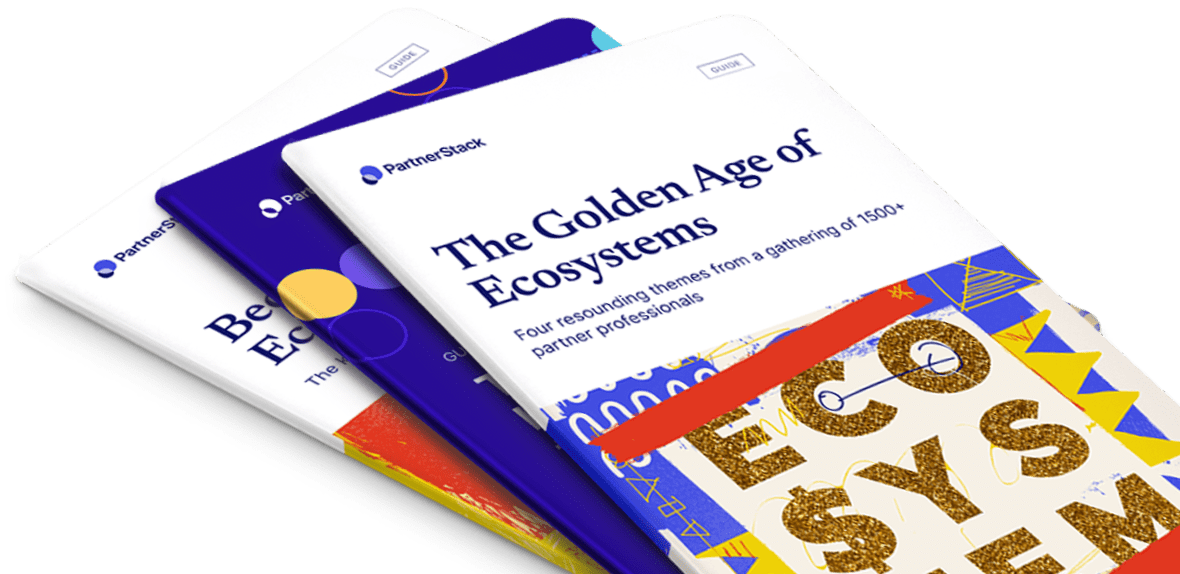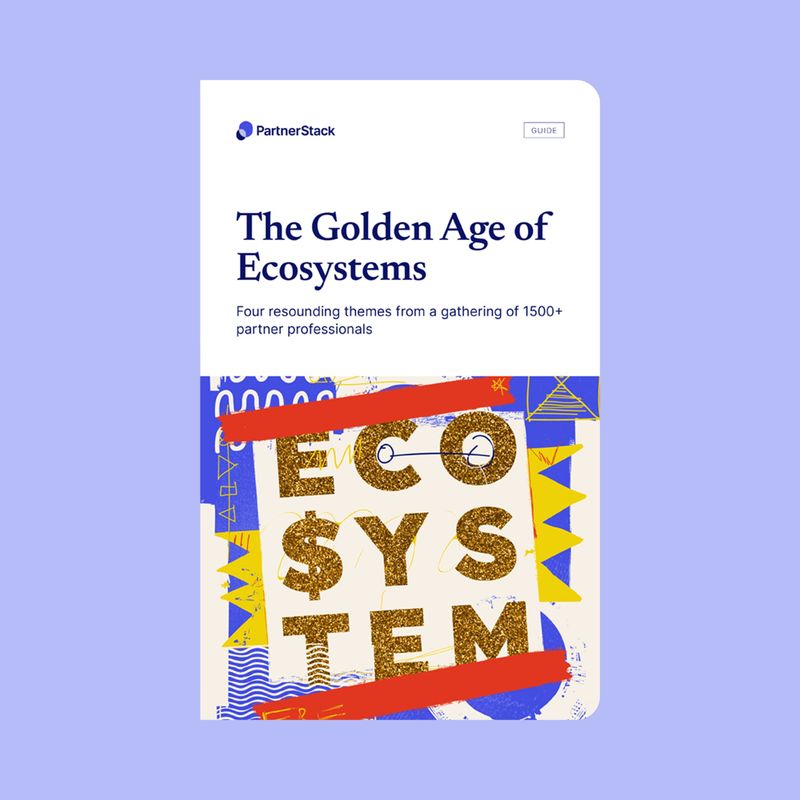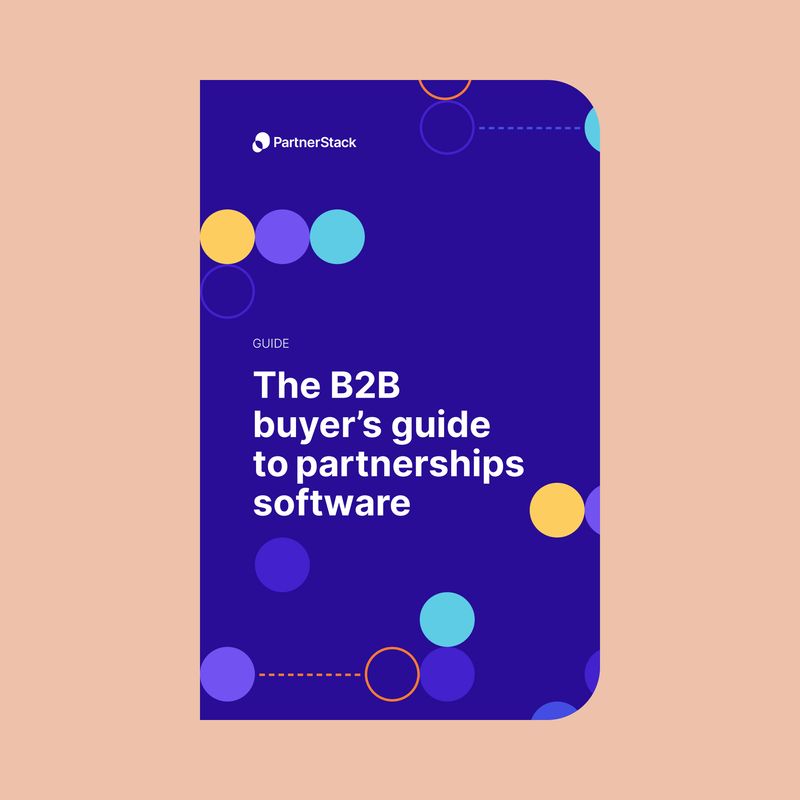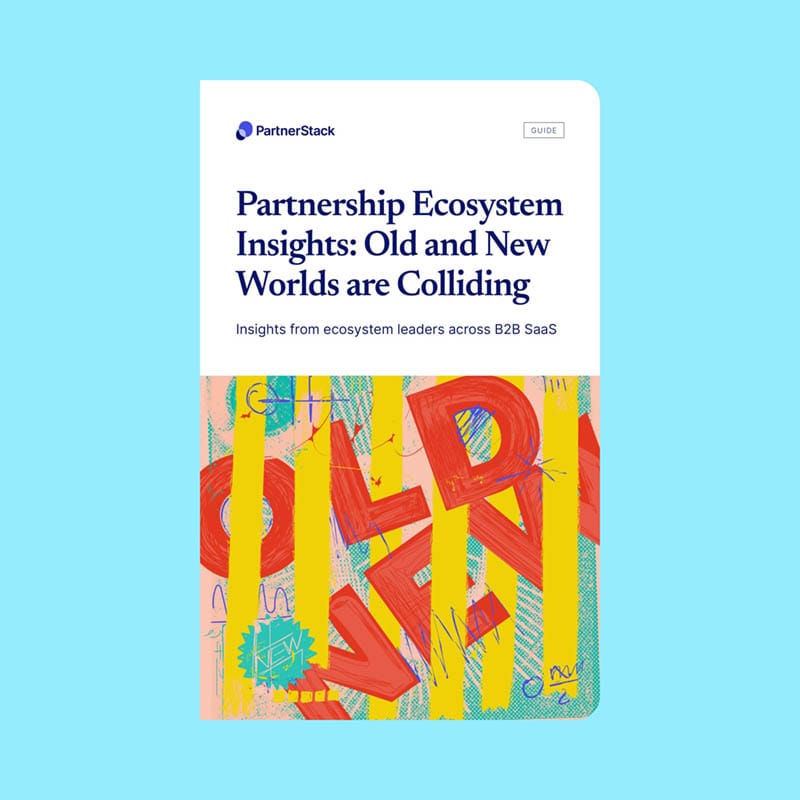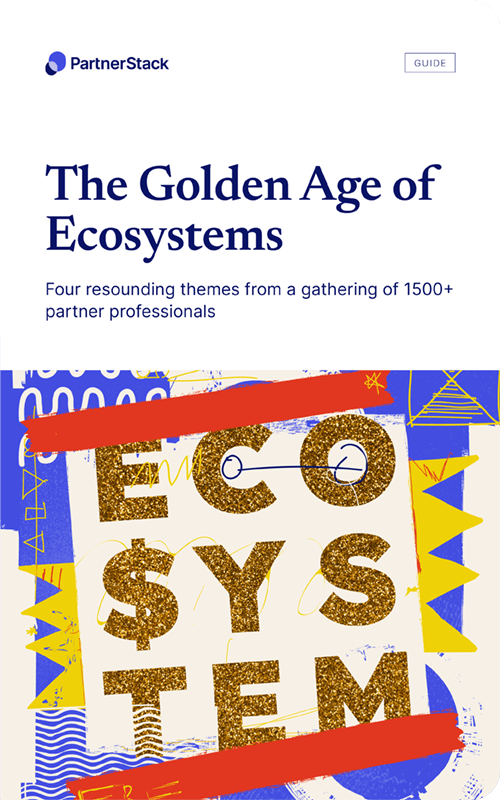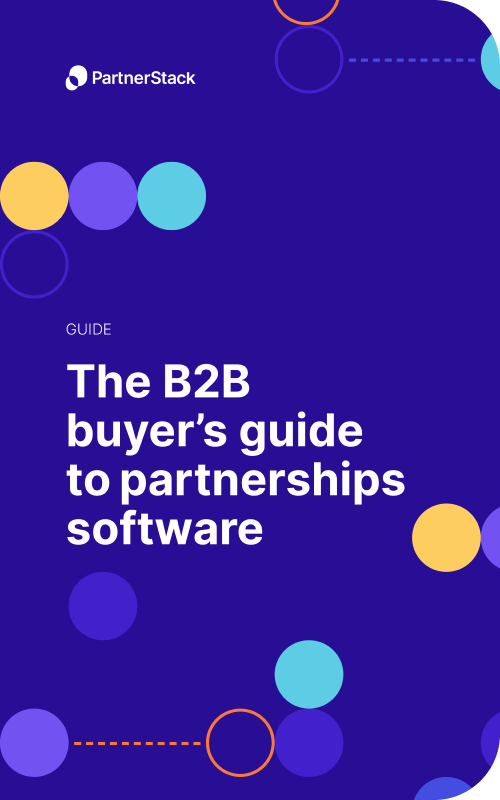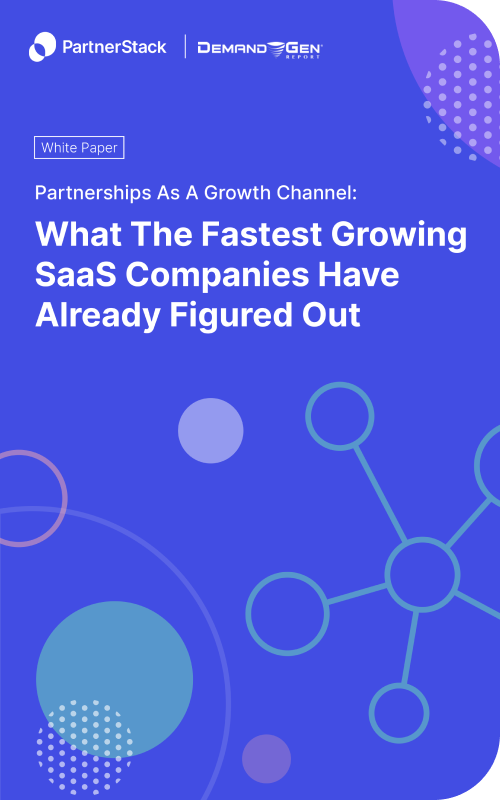Successful partner ecosystems hinge on a key factor — having partners. But, how? Recruiting partners doesn’t have to be hard — there’s a process for it, including tried and true partner recruitment steps that will help you gain your first revenue-generating partners.
It’s clear, partnerships can be lucrative and a great way to win at growth, scale and revenue. Partnerships is a long-term strategy that requires some foundational work in the initial stages before it evolves into a sustainable ecosystem that thrives with automation and smart integrations. The secret is knowing the right course of actions to take, knowing who you are as a business partner in B2B SaaS and finding the right partners to generate success together. Just a match made in revenue.
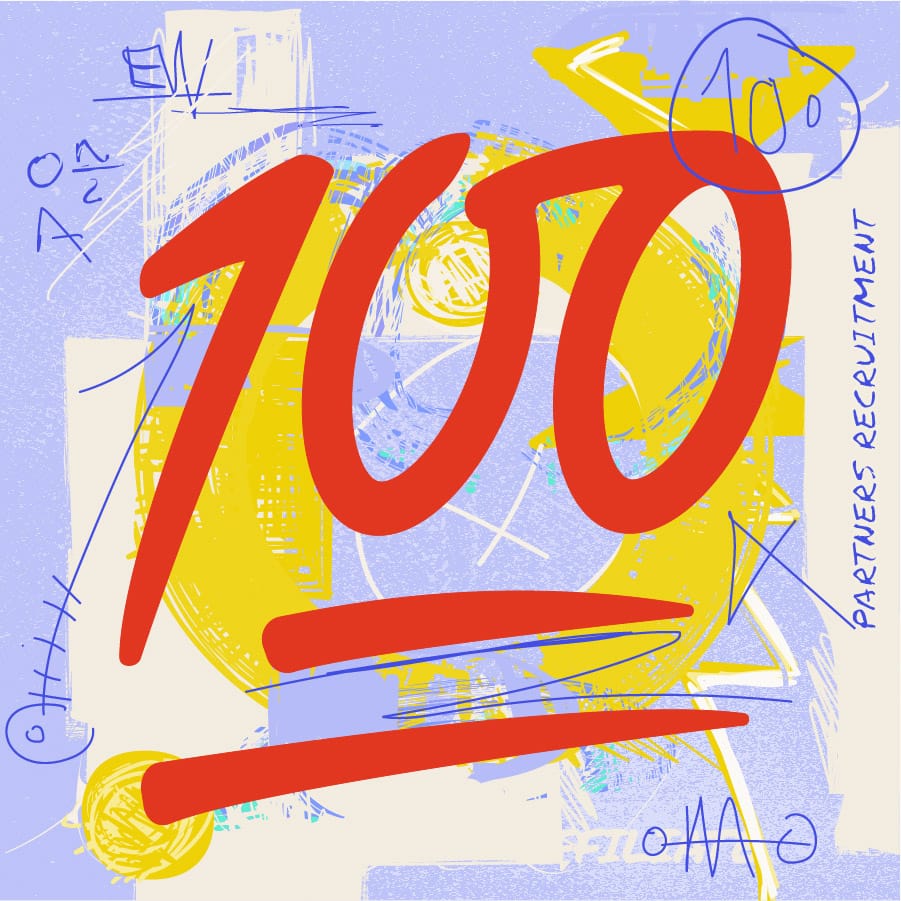
The first 100
Launching a partner program can seem daunting at first — but once you learn the steps necessary to set yourself up for success, it’s a simple matter of process that builds confidence over time and program milestones. Throughout this guide, we will show you how. From identifying your ideal partner type to building incentive programs to recruiting the right partners, setting up your ecosystem properly is key for your revenue-driving success. With focus, time and a growing knowledge of partnerships and how they work, recruiting the right partners is an inevitability that provides more ROI to your business.
The strategy works — and launching partnerships within your organization now is your best course of action to bring the power of a good partner program to your bottom line. The trick to enjoying value-generating partnerships within your ecosystem comes down to selecting the right partners to work with.
To help you achieve the success you deserve for your partner program, we’ve put together this comprehensive guide on exactly how to find and recruit the right partners.
In this guide, we will:
- Identify your ideal partner type
- Build your partner rewards program
- Recruit the right partners for your partner program
- Set up your new partners for success
- Provide the right resources for your partner
At PartnerStack, we have an all-in-one ecosystem platform that can connect you with a network of 65,000+ active partners of various partner types and offerings. With partnerships at the heart of our ecosystem, we recognize that finding and recruiting partners for your partner program is exactly how you get the desired results everyone winning at partnerships is talking about.

Step 1: Identify your ideal partner type
The first question you need to answer before you can launch any partner program: what kinds of partners do I want to work with?
Deciding which partners are the best fit to start with depends on the goals of your partner program. All partner programs are designed to drive revenue, but have different paths to getting there.
Types of partners for your partner program
These are common partner types for you to consider when getting started with your partner program.

Affiliates
Affiliate partners promote your product by driving traffic back to your website and landing pages through unique, trackable links. The primary ways affiliates do this are through content creation and paid advertising targeted at your ideal customers.

Customer ambassadors
Ambassador partners are already users of your product, meaning they know first-hand who it’s for and why it’s valuable. Ambassador partners can work similarly to affiliate partners by sharing their unique link back to your site, or they can send qualified leads directly to your sales team to work on.

Agencies and consultancies
Agency and consultancy partners provide services to their clients, often relying on external SaaS products and services. Agency and consultancy partners can introduce their clients to your product, position it as part of their overall offering, and even resell it directly to clients.
What about technology partnerships and strategic alliances?
There are other types of partnerships to consider as you scale up your ecosystem, such as:
- Technology partnerships, focused on building integrations between two companies’ products
- Strategic alliances, which involve two companies with complementary products or services working together for mutual benefit
In this guide, however, we're covering how to recruit partners for your ecosystem that market and sell your products on your behalf and directly drive revenue to your business. When you're just getting started, it's important to keep things simple.

Which partner type is right for your business? Hint: Keep it simple, start with one
Each type of partner is uniquely valuable — but if this is your business’ first partner program, it’s important to focus on a single type of partner to start with. Partner programs take resources to run, and you’re likely to learn a lot from your first program that you can apply to every program you launch in the future. Committing and launching with a specific partner type allows you to track your progress and success to best support your partnership strategy and the tactics you’re employing.
- Your main goal is generating qualified leads, or sign-ups if your product is free to start
- Your website is effective at converting traffic into leads and sign-ups
- You want to grow your brand presence
online
- You have an active customer base that loves your product
- Your product is low cost or easy for an individual to start using
- Your target customers often hire agencies or consultancies for support
- Your product can add value to agency and consultancy offerings
- Your product integrates with other product's agencies and consultancies to set up or sell
- Your main goal is generating qualified leads, or sign-ups if your product is free-to-start
- Your website is effective at converting traffic into leads and sign-ups
- You want to grow your brand presence
online
- You have an active customer base that loves your product
- Your product is low cost or easy for an individual to start using
- Your target customers often hire agencies or consultancies for support
- Your product can add value to agency and consultancy offerings
- Your product integrates with other products agencies and consultancies set up or sell

When you’re ready to dive deeper into partner personas, we’ve got you covered with a full guide and a free template for you to use.
Learn how to build personas — and get a free template: Building Partner Personas (for More Profitable Partnerships).
Step 2: Build your partner reward model
Partnerships can provide immense value to your business in terms of accelerating customer acquisition and revenue — but for that to happen, your business needs to provide value back to partners to keep them motivated.
Unsurprisingly, monetary rewards are the key to almost every successful partner program. The more partners can earn from promoting your product, the more likely they are to dedicate their time and resources to promoting it. Let’s be honest, incentives work.
How you choose to reward partners is one of the most important decisions to make for your program’s success.
What types of conversions will you reward partners for? Hint: They should be tied to revenue!
For SaaS partner programs, you should almost always only reward partners when they drive paying customers back to your business.
Some partner programs, especially in the B2C space, will reward partners for driving clicks or free sign-ups. Best practices in B2B are a bit different — for instance, you should generally avoid paying partners for conversions that don’t correlate to revenue because:
- Non-revenue generating conversions can hurt the profitability of your partner program. Rewarding partners only when they produce paying customers ensures that you’re not losing money on rewarding partners, because the reward should always be a fraction of the amount the customer pays.
- Non-revenue generating conversions are much more prone to fraud. Affiliate programs can unfortunately attract bad actors who are just looking to make a quick buck. Rewarding partners based on clicks, lead conversions, or free account sign-ups opens the door to partners submitting fraudulent conversions through their links. Paid transactions are significantly more difficult to fake.
Instead of non-revenue generating conversions like clicks, leads and free sign-ups, consider focusing on rewarding partners only when they drive paying customers to best safeguard your business.
If you still want to reward partners for free conversions, be sure to closely monitor the conversions partners are driving to ensure their legitimacy.

Percentage vs flat rates: How much should you pay your partners?
To decide how much your partners will earn from the conversions they drive, you first need to decide if you’ll reward partners through flat or percentage rewards.
- Flat reward: A reward for a fixed monetary amount, e.g. “Earn $100 for each sale”
- Percentage reward: A reward for a percentage of the transaction value, e.g. “Earn 25% from every sale”
Percentage rewards are the most common choice for SaaS partner programs, because they offer partners the opportunity to earn more when they refer more valuable customers, thereby motivating partners to drive more revenue for your business.
If you choose percentage rewards, you also need to decide how long partners can continue earning a percentage of revenue from referred customers: only once, for a limited amount of time, or for the entire customer’s lifetime.
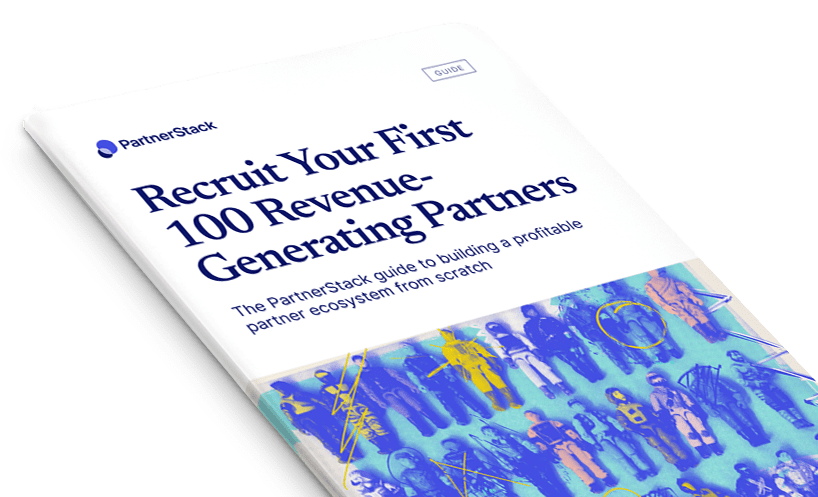
What the data on 500+ SaaS partner programs says
We analyzed the reward models of every partner program on PartnerStack to understand what kinds of rewards the most successful programs have.
In our analysis, we find that the most successful programs reward partners on a recurring basis for at least one year, with a majority of top-performing rewards having no time limit at all.
Looking at those same top-performing programs, we see that the most popular percentage rewards range between 20 to 40% of the transaction value, with some programs offering up to 50% revenue share for the first year only.
Only you can know how much of each transaction your business can afford to share with partners, but you need to make sure that your offer is compelling to partners and competitive with other products in your space. Look at what rewards other companies in your space are offering to partners before settling on your own.
You can also see what programs on PartnerStack are offering to partners on the PartnerStack Marketplace.
To tier or not to tier: Should you tier your partner program?
Many partner programs use tiers to motivate partners to drive more business. Partners who sell more get access to higher tiers, which typically have more benefits including higher commission rates.
Don't focus on tiers to start
Tiers add many complications to a partner program, as you have to consider:
- What is the right reward amount for each tier?
- What are the criteria for upgrading partners between tiers?
- What benefits beyond additional commissions can I provide higher-tier partners?
That’s why although tiers are a common part of partner programs, we recommend that new programs ignore tiers and instead focus on delivering a single compelling offer for their ideal partner persona.
Step 3: Recruit the right partners for your program
After selecting your partner type and building out your rewards program, you’ll be ready to start recruiting partners. Finding the right partners for your program is key to a thriving partner program.
There are two types of partner recruitment:
- Inbound recruitment: where partners discover your program themselves
- Outbound recruitment: where you reach out to partners to invite them to your program
- Your partnerships landing page on your website
- PartnerStack Marketplace
- Inside your product (for customer ambassadors)
- Searching on popular platforms (e.g. Google, YouTube, LinkedIn)
- PartnerStack’s partner discovery tool
- Competitor’s partner directories (especially for agencies and consultancies)
- Your existing customer contacts (for customer ambassadors)
- Your partnerships landing page on your website
- PartnerStack Marketplace
- Inside your product (for customer ambassadors)
- Searching on popular platforms (e.g. Google, YouTube, LinkedIn)
- PartnerStack’s partner discovery tool
- Competitor’s partner directories (especially for agencies and consultancies)
- Your existing customer contacts (for customer ambassadors)
Between inbound and outbound recruitment, which should you focus on first? The answer is both!
Inbound and outbound recruitment are two halves of a single solid recruitment strategy. If you rely entirely on inbound partner recruitment, you’re likely to see a slow start to your program as it takes time for word to spread and reach your ideal partner persona. Outbound recruitment can be incredibly effective and is especially valuable at kickstarting your program early — but it’s difficult to scale up and won’t reach everyone.
Inbound recruitment
Get set up by creating a partner program presence on your channels and website.
Build your partner landing page
The most important part of your inbound recruitment strategy is having an effective landing page for partners on your website. Your landing page should make it clear who your program is for and what the benefits of participating in it are.
Example
This copy template for partner program landing pages is created by PartnerStack, and is free to use for anyone.
Some questions that partners will have:
- How much can partners earn?
- Who is your product’s target audience?
- How do partners get paid?
- What resources support partners’ success?
- Who is a good fit to be a partner?
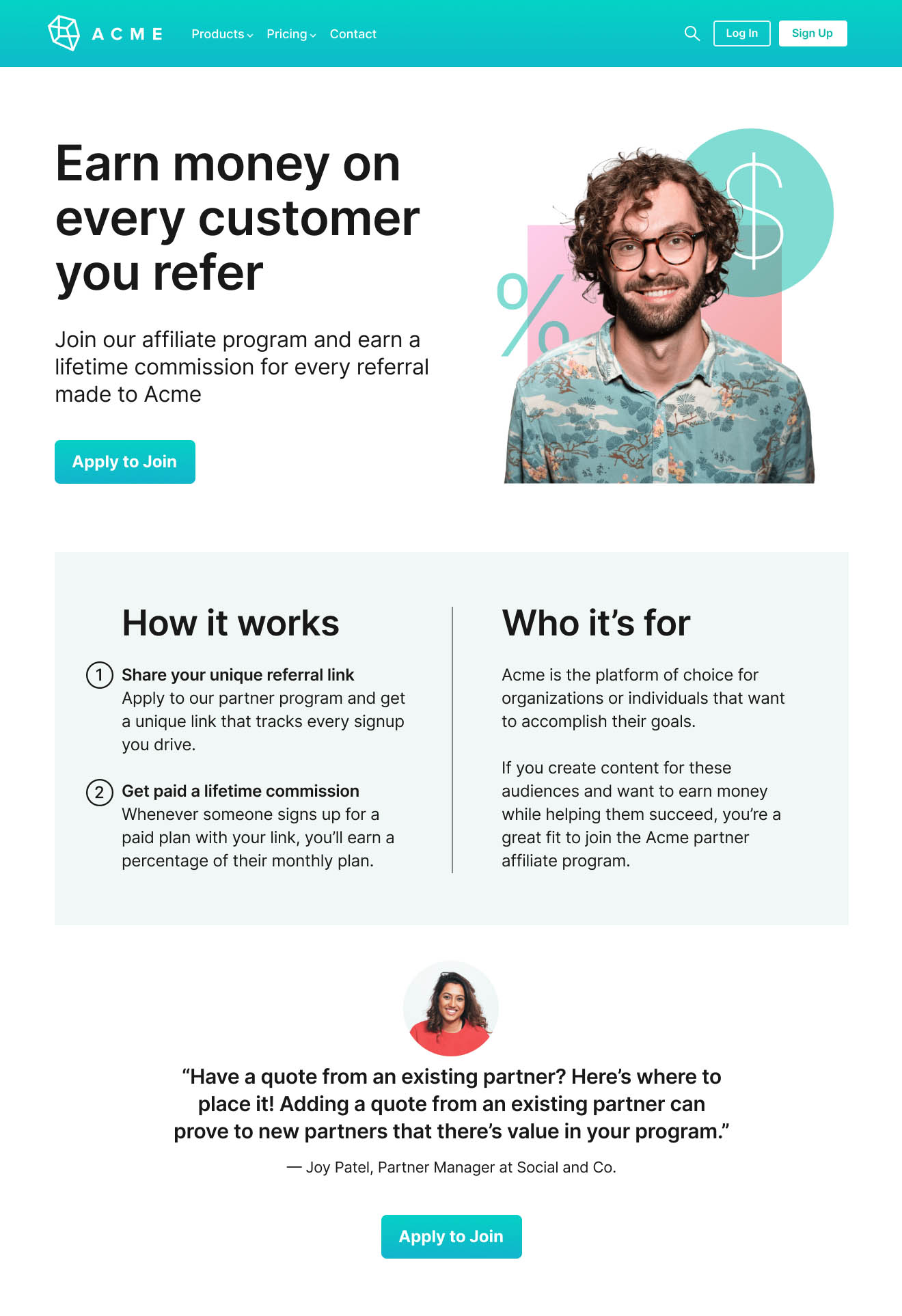
Get listed in the PartnerStack Marketplace
The PartnerStack Marketplace promotes your program to thousands of partners that already use PartnerStack to earn money by driving business and revenue for SaaS companies like yours.
Programs listed in the PartnerStack Marketplace can be browsed at market.partnerstack.com. Every program on the PartnerStack Marketplace comes with its own landing page that links directly to your application form, making it easy for partners to apply to join. (We still strongly recommend having a separate, dedicated landing page for your program on your website!)
Partners can also explore programs to join directly from within their PartnerStack dashboard.
The PartnerStack Marketplace drives millions in revenue for PartnerStack customers every year, with some programs seeing more than 30% of their entire program revenue come from partners that joined through the PartnerStack Marketplace.
Reach ambassadors inside your product
Want to convert your customers into customer ambassadors? The best way to reach the people using your product is directly inside your product!
PartnerStack’s referral widget can be embedded directly inside of your product, giving your customers one-click access to their unique referral link. They can share that link anywhere and earn rewards whenever they drive conversions for your business, based on the rewards you decide.
After shifting from using only a landing page to embedding their customer referral program in their app, Ignition saw a 91% increase in average new monthly partners joining their program.

Outbound recruitment
Explore the internet for opportunities to sniff out the right partners for your partner program. Search on Google for top terms:
- Search for your own target keywords. Chances are you already have a list of target keywords you want your website to rank for in order to reach your customers. Check to see what pages and articles show up in the top results for those terms — there’s a good chance that some of them come from potential partners!
- Search for “Top X software for Y” listicles. Articles that cover top software within a specific category are often popular and rank well on Google. If these articles exist for your space (and they likely do), being listed within them can be a huge source of traffic and revenue. If you find relevant articles where your product isn’t mentioned, reach out to the author and see if you can get added! Even if your product is there, encouraging the author to switch to using affiliate links so they can earn revenue from conversions they drive can make them more likely to feature your product in the future.
Example: PartnerStack + Adam Enfroy
Adam Enfroy is an affiliate marketer and prolific blogger who reaches over 500,000 readers monthly. His site includes many articles on different categories of business software that regularly hit the first page of Google results. One of those is an article specifically about partnerships software, 7+ Best PRM Software of 2022 (Partnership Tools Ranked). And at the very top of that list, you’ll see PartnerStack.
That wasn’t always the case. PartnerStack used to not be mentioned here at all, because Adam didn’t know about the platform or the value it delivered to growing B2B partner ecosystems. It’s only because we found Adam’s article on top partnership tools via a Google search, and reached out to talk about how we fit into the space, that PartnerStack is now included.
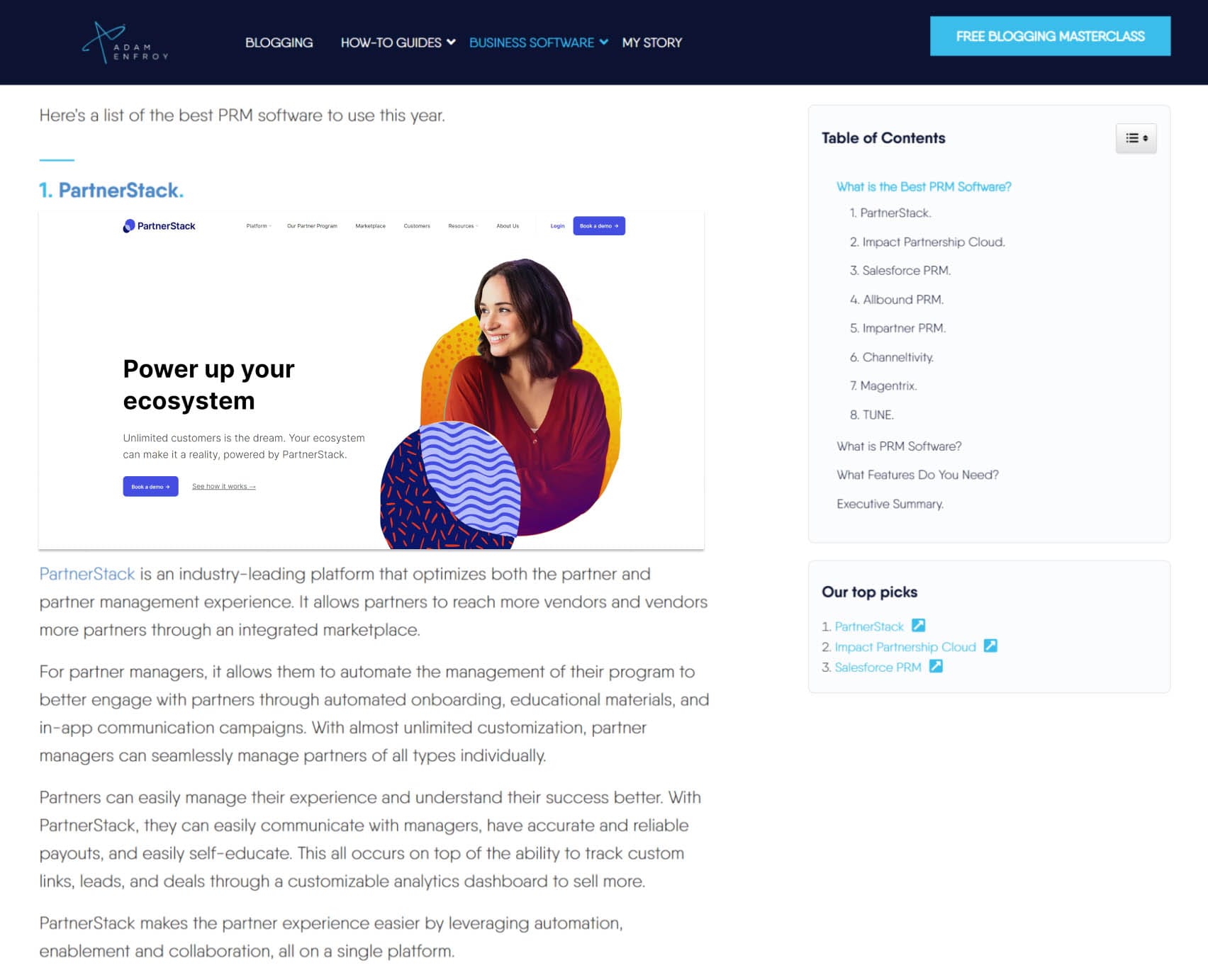
Today, Adam is an extremely valued partner for PartnerStack, and has even contributed writing to PartnerStack’s own website with his article How to Keep Top-Performing Affiliates Engaged — and How to Push Them Away. But that never would have happened had we not researched writers in this category and connected with Adam through his site.
- Take advantage of Google’s people also search for box. Many search results on Google will also prompt you to explore what people also search for in that space. Explore as many search terms as possible to find more relevant partners!
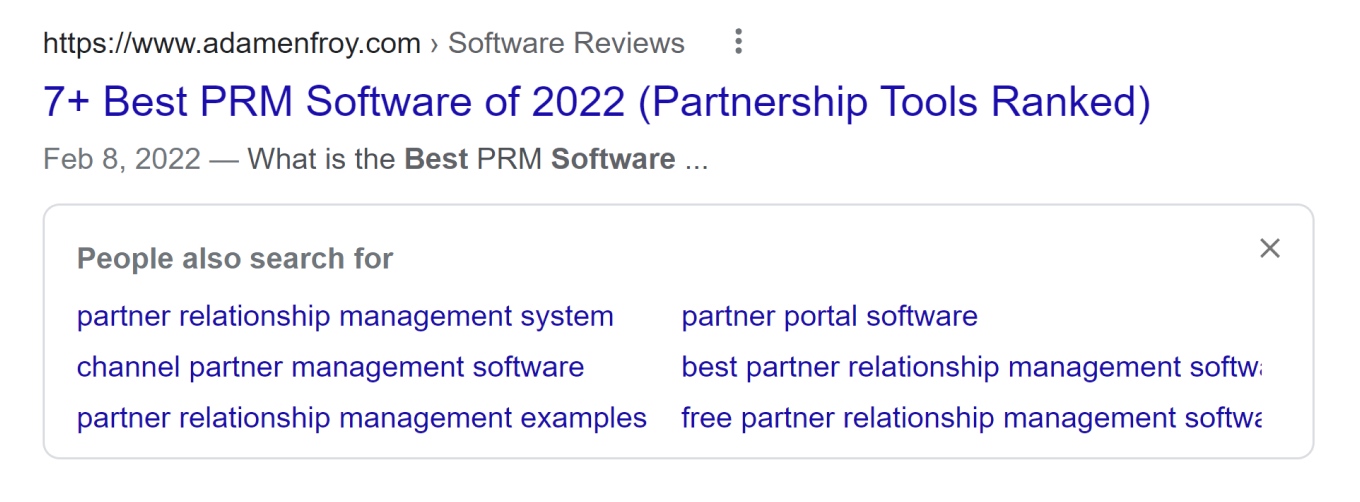

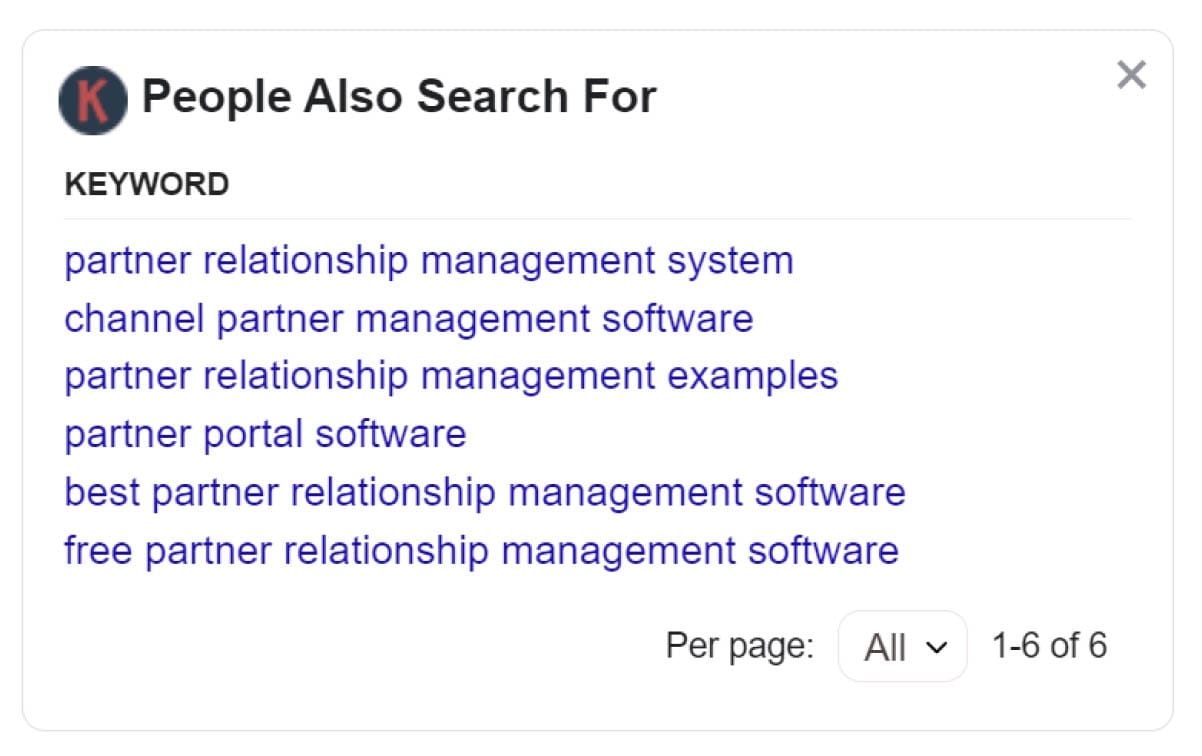
Find out who competitors are partnering with
It’s common for partners to promote multiple products within an industry. Partners that would be a good fit for your program are likely to already be promoting other products in your space — like your competitors.
That’s an opportunity for you though, because it’s easy to find partners that are already working with competitors and invite them to your program. Here’s how:
Find potential partners already linking back to your competitors. Use a search engine optimization (SEO) tool like Ahrefs or Semrush with the ability to check backlinks and see which pages link back to a competitor’s site. You can review this list of backlinks to find affiliate links leading to your competitors. Adding “?” to your backlinks search will show only results that have unique identifiers — like UTM tags or affiliate codes — making it easier to find relevant results.
Look for partner directories on your competitors’ websites. As a benefit to partners, many businesses will provide directories of partners on their websites so that prospects and customers can reach them directly. Check competitors websites for partner directories and reach out to them! (Just make sure to contact them directly yourself, and not through a form on your competitor’s site.)
These tips aren’t just useful for finding partners of competitors — you can also use them to find partners of complementary tools, or even products you integrate with!
Use PartnerStack’s partner discovery tool
We already covered the PartnerStack Marketplace, which promotes your program to thousands of partners already using PartnerStack. There’s another way PartnerStack helps you find the right partners — partner discovery.
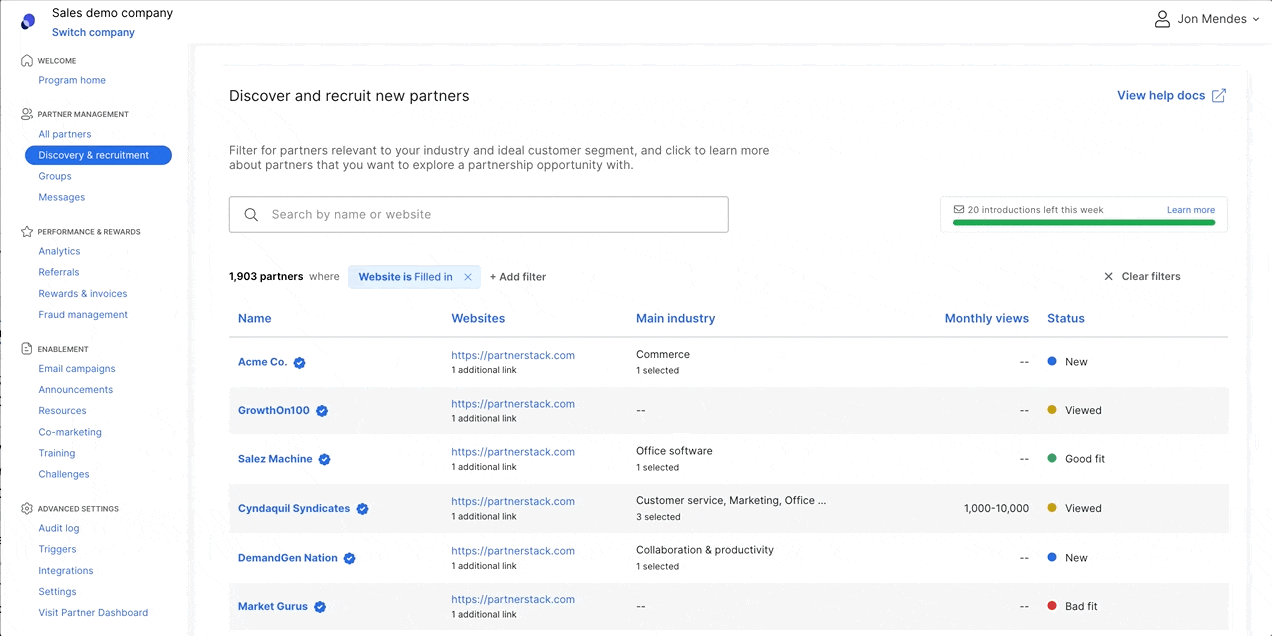
Using PartnerStack’s partner discovery tool, you can search for active partners in your industry and reach out to them to invite them to your program directly. Filter partners by partner type, industry, audience size and more to find the perfect set of partners to reach out to.
Between the PartnerStack Marketplace and partner discovery, PartnerStack is the only partnerships platform that supports both inbound and outbound B2B partner recruitment.
Create your partner application form
The majority of your partners, both inbound and outbound recruited, will likely join your program by submitting an application.
Your partner application form is a great opportunity to ask questions and learn a bit more about your partners before you approve them to join your program. That said, you also want to avoid making your application too long or difficult to complete, as this can lead to reduced applications.

- What country are you based in?
- Which of the following best identifies you:
- Agency/consultant
- Review/comparison site or blog
- Software/tool for businesses
- Course instructor
- Social media influencer
- Affiliate marketer
- Other
- How do you plan to market [our brand]?
- Which website will you primarily drive traffic from?
- How large is your audience?
- What do you need to be a successful partner?
- How did you discover [our brand]?
PartnerStack makes it easy to build application forms and manage all your incoming partner applications.
Build branded application forms simply by choosing which fields you want your form to have.
Manage all of your applications from inside PartnerStack, which makes it easy to review applications quickly and even bulk approve or reject applications.
Step 4: Set up your new partners for success
Once your partners are in your program, they’re good to go, right? Not exactly. Applying to join a partner program is easy to do. Actually succeeding in it is more challenging. If partners don’t feel motivated as soon as they enter your program, you’re likely to quickly lose their attention.
This is where partner activation comes in. An activated partner is a partner that’s driving measurable success for your program, however you choose to define it (although typically it means they’re driving sales and revenue).
The two most crucial steps to activating your partners are:
- Onboarding your partners (ideally with automation)
- Providing partners with useful resources
Automate your partner onboarding (for smooth operations)
Making sure your partners feel welcomed into your program, and have the information they need to get started right away, is one of the easiest and highest-impact ways to improve your partner activation.
When you first start your program and have only a handful of partners, it’s feasible to give all of your new partners personal 1:1 onboarding. As your program scales up and the number of new partners increases, you’ll want to start automating your partner onboarding with emails based on your partners’ activity so far.
The three most common types of partner onboarding emails are:
- Welcome emails: Emails your partners receive when they join your program
- Inactivity emails: For when partners aren’t showing activity right away
- Progress emails: Message that acknowledge and celebrate your partners’ progress
Tracking the progress of all of your partners and sending each of these types of emails manually would be extremely difficult and time-consuming. Thankfully, PartnerStack includes everything you need to build and send automated emails to partners depending on what they do (or what they don’t do).
Welcome emails
You should always send an email to your partners as soon as their application to your program is approved. Some things you can include:
- Your partner’s unique referral link (if you run an affiliate or referral program)
- Reminder of how your reward model works and how partners can earn money
- Link to a useful high-level resource, like an FAQ for your program
You don’t have to limit yourself to just a single welcome email. If you have more useful information to share with partners, you can send them a few emails within the first few days.
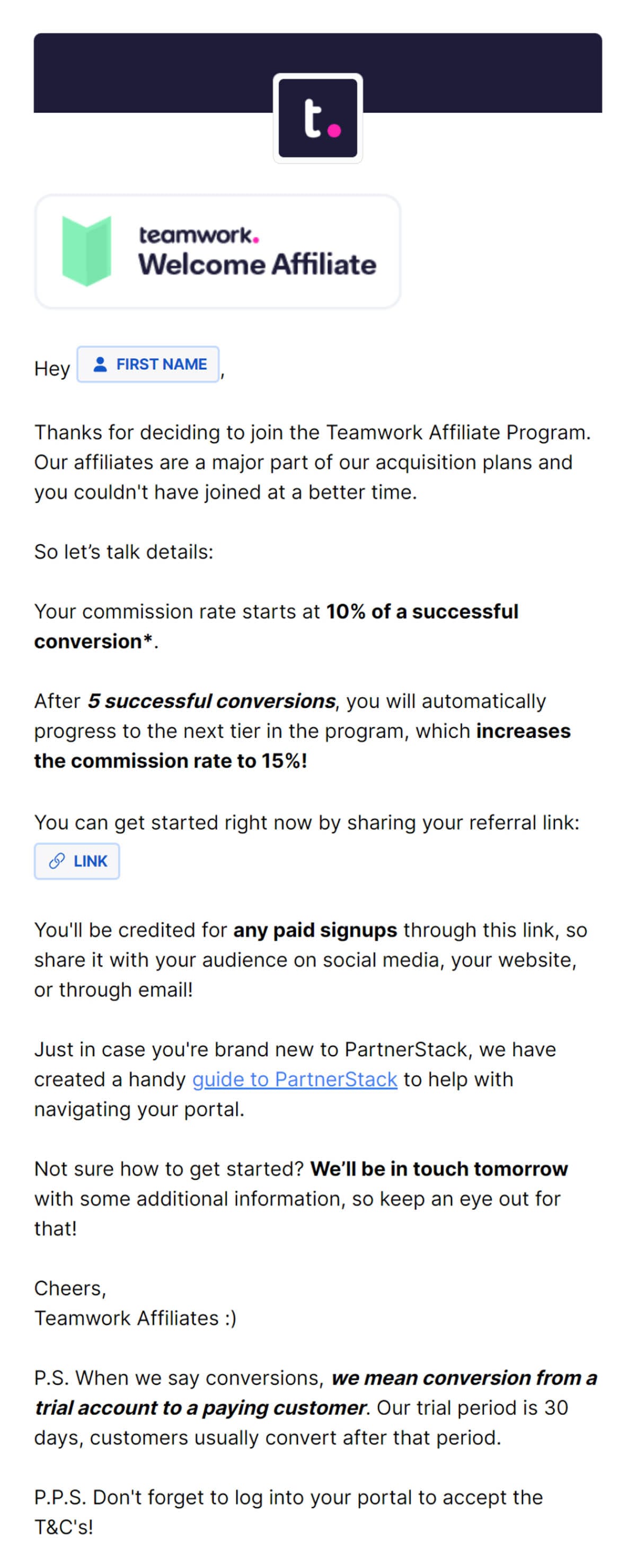

This activity can look like:
- Your onboarding emails are being opened
- Resources are being viewed or downloaded
- Affiliate links are getting clicks
- Partners are reaching out with questions

Get free ecosystem advice
Inactivity emails
It’s likely that many partners will join your program but show no activity early on. Emailing inactive partners with useful resources and tips on how to get started can make the difference between them never showing any results, or becoming future top-performers.
PartnerStack makes it easy to target automated emails at inactive partners, which are partners that have either not visited the partner portal or have not driven any leads, sales or sign-ups within a set period of time.
It’s most common to email inactive partners after seven, 14, and 21 days of inactivity. In these emails, you can:
- Ask if they need help getting started — sometimes prompting a partner to reply to you is the best way to get them to activate
- Link to more in-depth resources, like information about your customers or templates they can use when promoting your product
- Share success stories of other partners in your program, with tips on how to achieve similar results
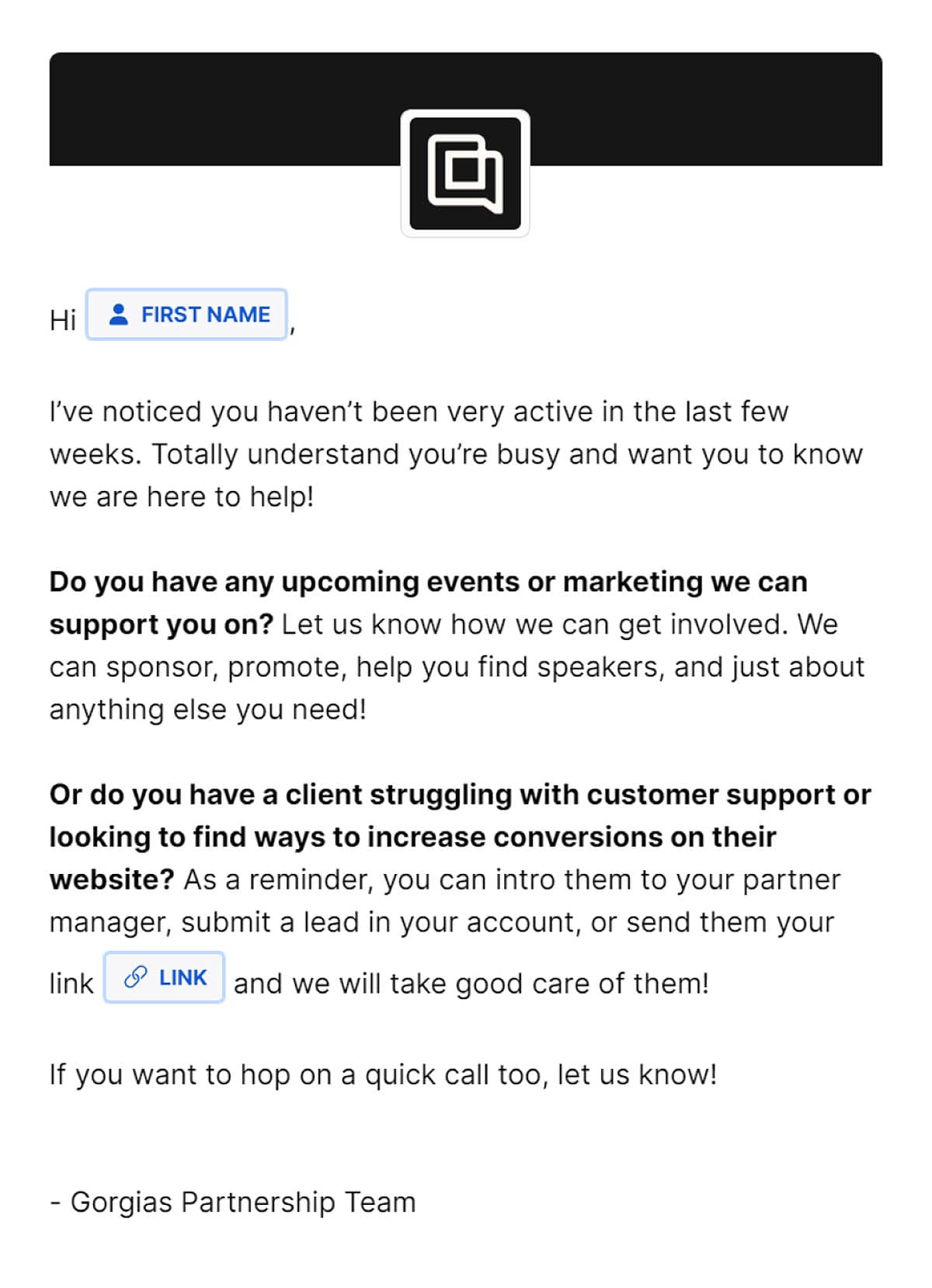
Progress emails
Celebrating the progress your partners make early on in your program can motivate them to keep moving forward. Automate emails to send to your partners when they hit specific milestones, like:
- When their link starts getting clicks — even if those clicks haven’t converted yet, it lets partners know their links are getting attention
- When they drive their free signup
- When they drive their first paying customer
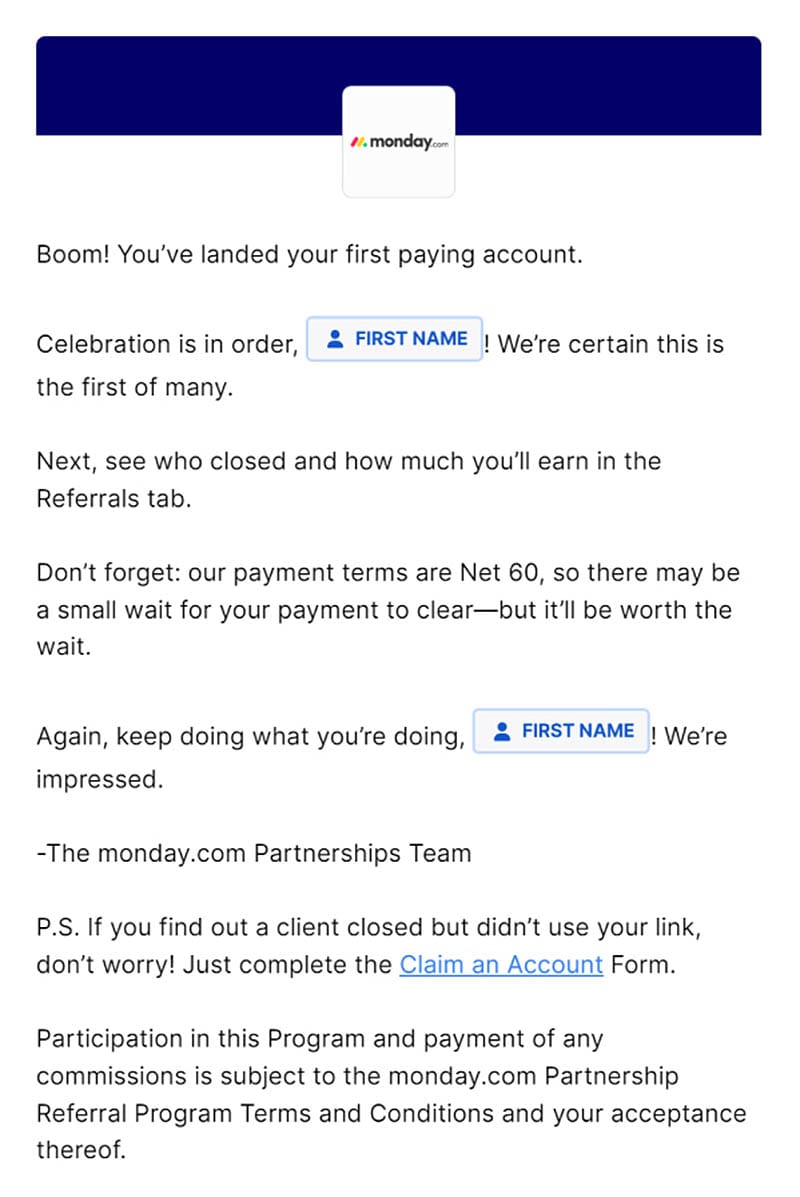
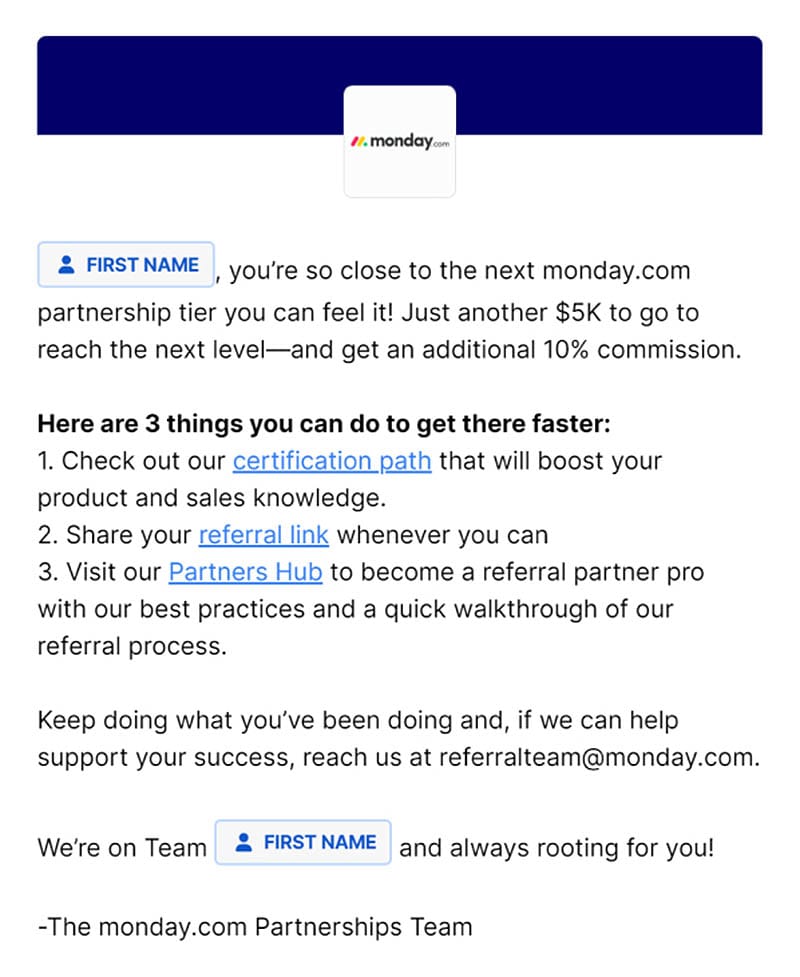




Step 5: Provide the right resources for partners
FAQ for partners
In a survey of over 1,000 partners using PartnerStack, partners rated a partner program FAQ as the #1 most important resource partner programs can provide. Having a single document that covers the need-to-knows of your program makes it way easier for partners to get started. This can:
- Remind partners how your reward model works
- Tell partners where to get their referral link(s)
- Give partners examples of top keywords and strategies
Visual brand assets
Don’t make your partners search Google for “companyname logo png” or screenshot parts of your website whenever they need visuals to feature your product. Make life easier for your partners, and ensure they stay on-brand by giving them the right assets to use right away.
- Your company logo, including any variants (e.g. logo vs. logotype, light and dark version)
- Product screenshots and mockups
- Display ads in a variety of sizes
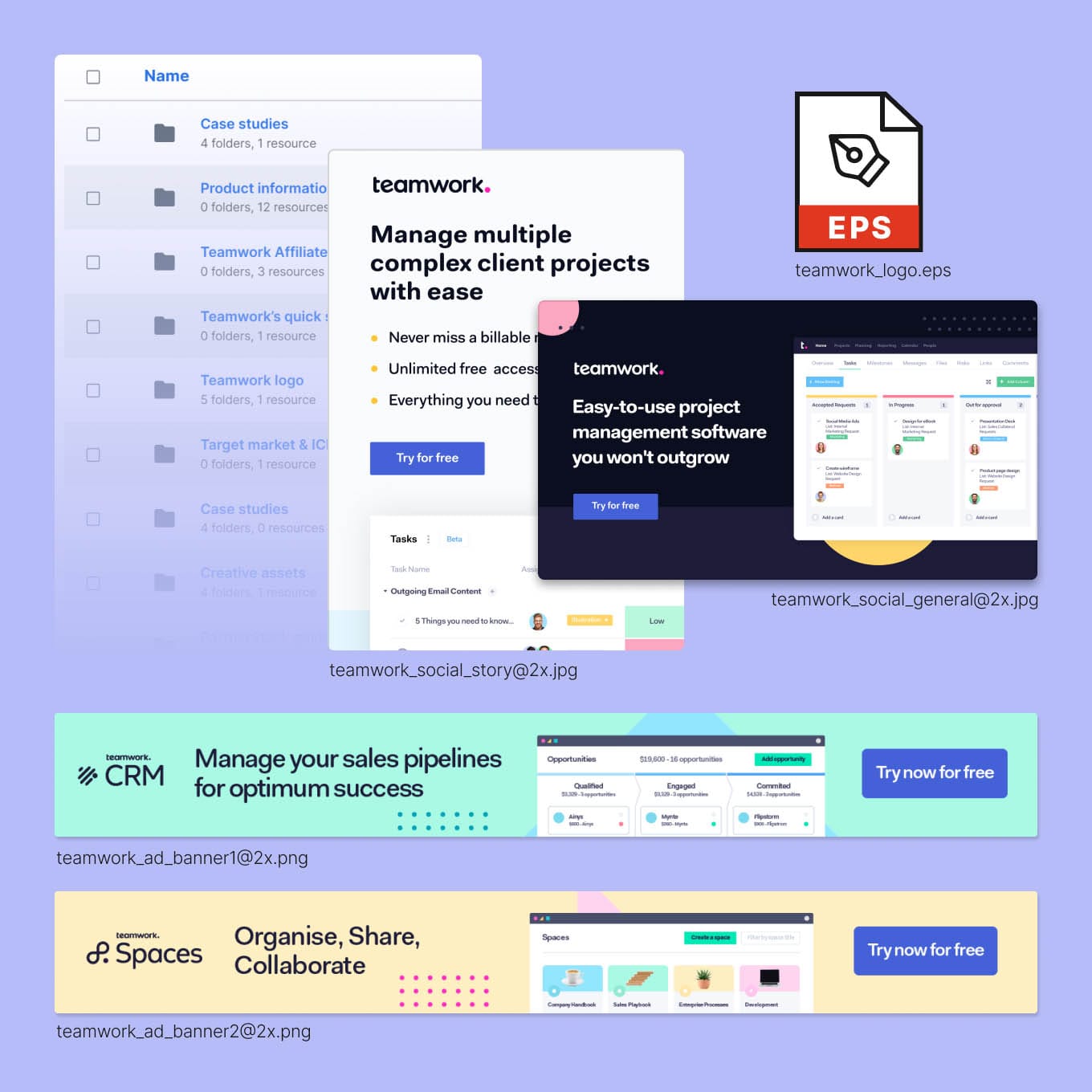
Boilerplate messaging
Similar to visual brand assets, if you don’t provide messaging for your partners to use, they’ll have to trawl through your website to find something usable or come up with their own messaging for your product. Consider including:
- Short, medium, and long descriptions of your product/company
- Descriptions of specific features
- Information on plans and pricing (this is something you really don’t want partners guessing on)
Customer personas
Ideally, your partner landing page, welcome email, FAQ and other resources should give partners at least a high-level idea of who your customers are — and by extension, who they should be marketing and selling your product to.
Go deeper with customer personas and share these insights with your partners. Detailed personas help partners:
- Better understand your customers and their needs
- Provide insights into how your product solves their problems
- Supports them to be more effective when marketing and selling your product

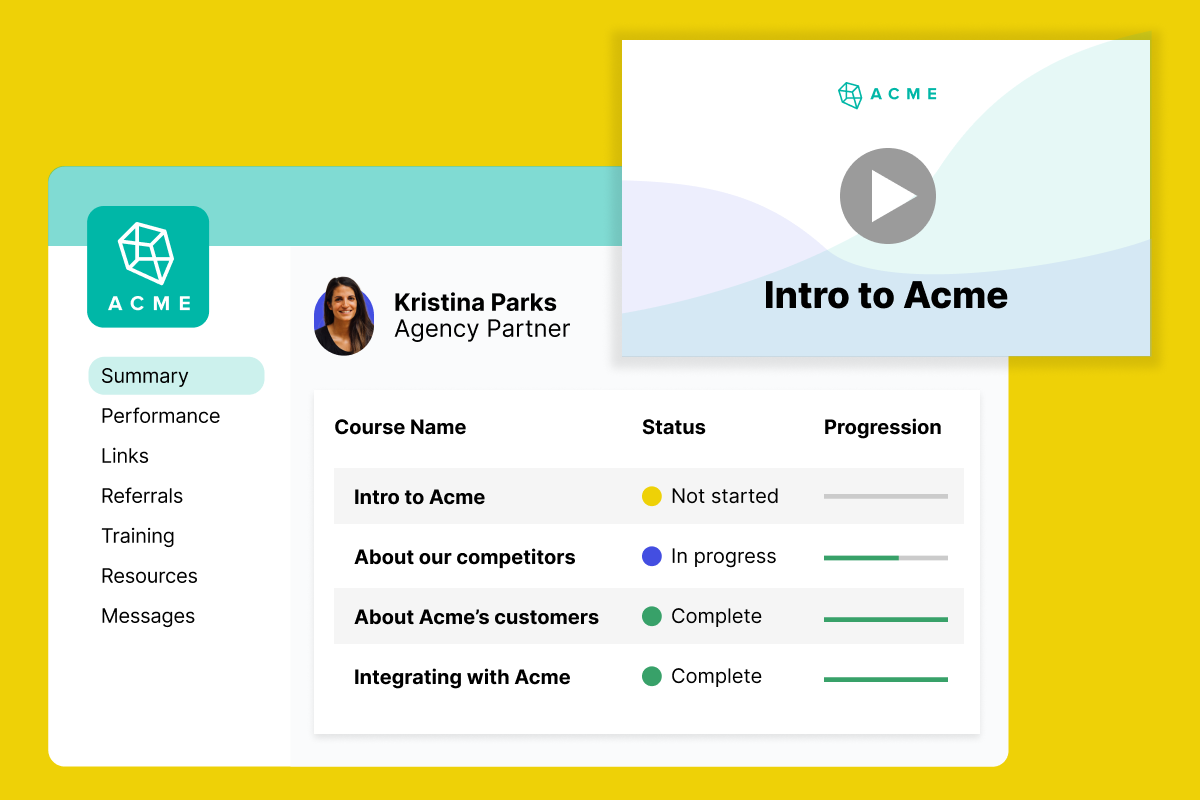
However, if you have a complex product, or want to empower partners to resell your product to end customers on their own, it’s worth considering how a complete training course could better enable your partners to succeed.
Learn more in our article:
Why Partner Education Can Make or Break Your Program
Conclusion
The 5 key takeaways as you prepare to launch your partner program
Let’s be honest, this is a lot to take in as you prepare for your big launch. But this guide exists to help you throughout each milestone as you set your partner program in motion. The next time you’re sniffing out best practices for recruiting your partners, you can reference each section of this guide to support your good work.
Staying in the know with partnerships ecosystems is an always-on for us here at PartnerStack. To best launch your partner program, we encourage you to keep these five things top of mind:
- Partner programs and partnerships are unique. Companies are dynamic as are the ways they operate and the people who run them. Program potential is based on the smart decisions made in the best interest of your own company and the partners you’re working with. Get to know your partners and why they’re different than the others.
- Partner programs are a long game. Prioritizing partnerships is a good move — but it’s important to level-set expectations because a successful program is not born overnight.
- Recruiting the right partners matters. Success hinges on an ability to identify the right partner type and partners. Every partner type is uniquely valuable — and being able to recognize this value and apply it to your business can be a game changer.
- Inbound and outbound recruitment strategies work together. You need both. Create a partner program destination on your website, make sure you’re listed in marketplaces and explore the internet for the best partners for your business.
- Automate your onboarding with PartnerStack. Activating your partnerships has never been smoother — automate onboarding and provide the resources as part of your program launch strategy.
Keep the partnerships conversation going. Markets change at a rapid pace — and what works in the first quarter of the year may not in the third. Stay in the know by following industry thought leaders, keep up to date on fresh resources and stay engaged in the partnerships space. Know what’s up in the industry and have insights handy heading into meetings — let ecosystems and their evolutions fuel your discussions and Slack chats.
Automating and scaling is made easy through PartnerStack’s ecosystem. After recruiting and activating your partners on our platform, your partner program is ready to launch so you can enjoy the revenue and benefits in half the time and usual cost.
- The average PartnerStack customer experiences 149% growth in revenue
- Partners drove more than $185M in revenue in the last year alone
- It takes 45 days on average to launch a new partner program by the average PartnerStack customer
We are invested in every stage of partnerships growth. As your partner program launches and grows, the PartnerStack ecosystem can power every kind of partnership and make it easy to run multiple programs side-by-side to diversify your own ecosystem.
At the end of the day, we’ve got your back. And remember, this isn’t just on you — it’s called partnerships — you can’t do it alone.
